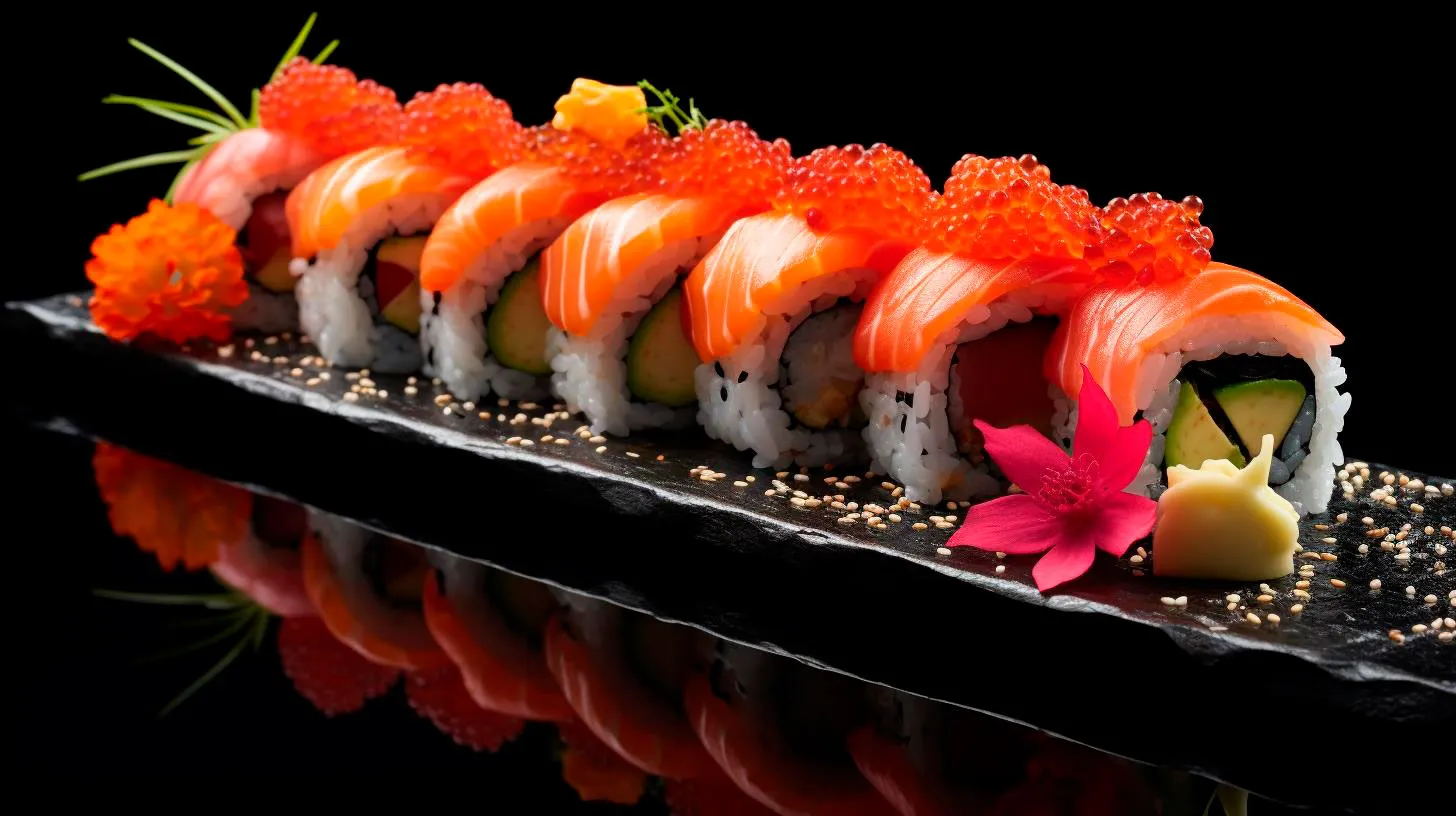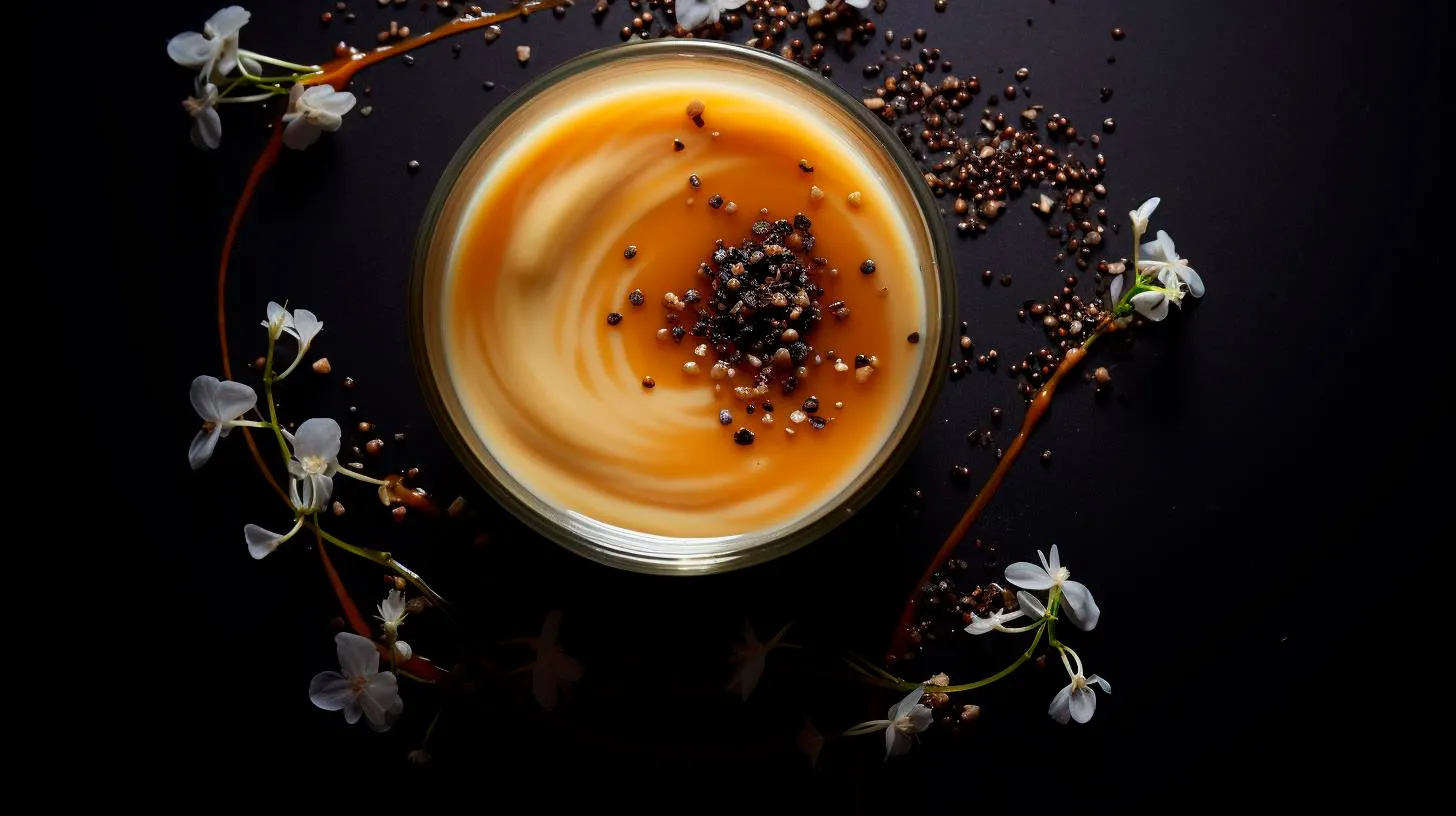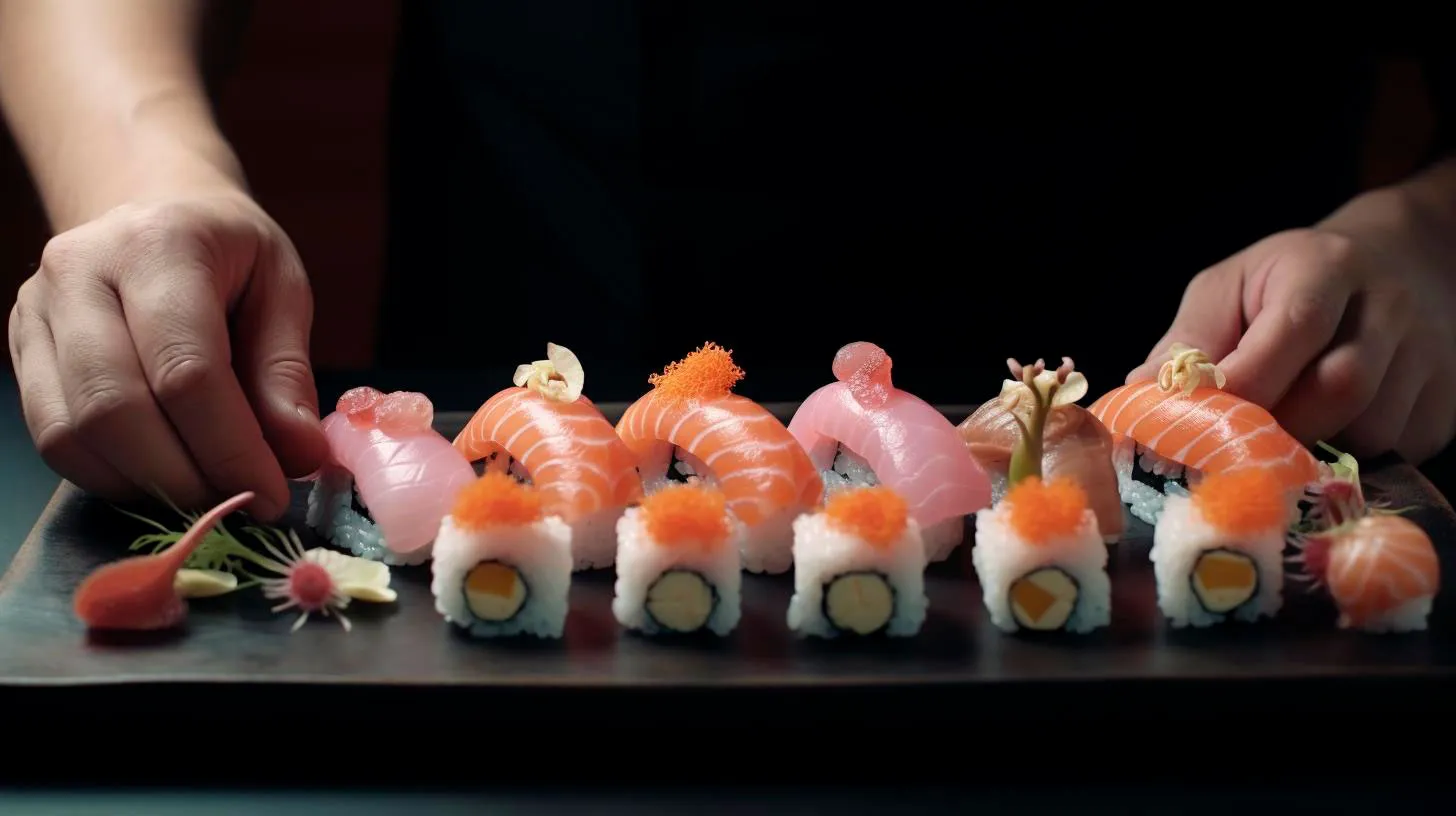Elevate Your Sushi Game: Mastering Essential Techniques with a Yanagiba Knife
One such tool that deserves a spot in every sushi lover’s kitchen is the Yanagiba knife.
The Yanagiba knife, also known as a sushi knife or sashimi knife, is a traditional Japanese tool specifically designed for slicing precise cuts of raw fish. With its long, slender blade and incredibly sharp edge, this knife is ideal for achieving thin slices with minimal effort. Let’s explore how the Yanagiba knife can elevate your sushi game and master essential techniques.
The Art of Slicing with Precision
Ask any professional sushi chef, and they will tell you that slicing raw fish is an art form that requires skill and precision. The Yanagiba knife, with its single beveled edge and razor-sharp blade, allows you to effortlessly slice through fish like a true master.
Key Takeaway:
- The Yanagiba knife’s thin, sharp blade ensures precision cuts and thin slices of fish.
Whether you are preparing nigiri, sashimi, or maki rolls, the Yanagiba knife allows for delicate, paper-thin slices that not only look visually appealing but also enhance the overall texture and taste of the sushi.
Efficiency and Ease of Use
When it comes to preparing sushi, efficiency is essential. The Yanagiba knife’s long blade length allows for fewer strokes when slicing through the fish, increasing your efficiency in the kitchen. This means less time spent in preparing each roll, enabling you to serve your guests or customers in a timely manner.
Furthermore, the Yanagiba knife is designed with user comfort in mind. Its ergonomic handle provides a secure grip and reduces hand fatigue, even during prolonged use. The balance between the blade and handle creates a harmonious motion, making slicing through fish feel like second nature.
Key Takeaways:
- The long blade of the Yanagiba knife increases efficiency by requiring fewer strokes.
- The ergonomic handle ensures a comfortable grip, reducing hand fatigue.
Maintaining the Freshness of Raw Fish
One of the most critical aspects of sushi preparation is maintaining the freshness of the raw fish. The Yanagiba knife, with its exceptional sharpness, minimizes the damage to the fish’s texture and structure. The clean, swift cuts made by the Yanagiba knife help preserve the fish’s natural flavors and prevent any unwanted tearing or bruising.
Moreover, the Yanagiba knife’s long, thin blade reduces the chances of smearing or tearing any delicate fish flesh during the slicing process. This ensures that each piece of sushi maintains its shape and integrity, resulting in a visually appealing presentation.
Key Takeaway:
- The Yanagiba knife’s sharpness and clean cuts preserve the freshness and natural flavors of raw fish.
Investing in Quality and Durability
The Yanagiba knife is an investment worth making for any sushi lover or professional chef. With proper care and maintenance, a high-quality Yanagiba knife can serve you for many years to come. Investing in a durable, long-lasting knife ensures that you can continue to elevate your sushi game and create exceptional culinary experiences.
When choosing a Yanagiba knife, consider the blade material, hardness, and craftsmanship. High-carbon stainless steel or traditional carbon steel blades are popular choices, known for their exceptional sharpness and edge retention. Remember to regularly sharpen and hone your Yanagiba knife to maintain its precise cutting edge.
Key Takeaways:
- Investing in a high-quality Yanagiba knife ensures long-lasting durability.
- Consider the blade material, hardness, and craftsmanship when choosing a Yanagiba knife.
In conclusion, the Yanagiba knife is an indispensable tool for anyone looking to elevate their sushi game. Its precision, efficiency, and ability to maintain the freshness of raw fish make it a must-have for sushi enthusiasts and professional chefs alike. By investing in a high-quality Yanagiba knife and mastering essential techniques, you can take your sushi creations to a whole new level of excellence.
Embrace the art of sushi preparation, unleash your creativity, and let the Yanagiba knife become your trusted companion in your culinary journey.
The Art of Yanagiba: Unlocking the Secrets of Razor-Sharp Precision
Often referred to as the “sword of sushi chefs,” this traditional Japanese knife is renowned for its exceptional sharpness and delicate handling. In this article, we unravel the secrets behind the Yanagiba’s razor-sharp precision and explore how it revolutionizes the culinary experience.
Understanding the Yanagiba Knife
The Yanagiba knife is designed specifically for slicing raw fish and creating perfect sushi and sashimi pieces. Crafted with high-quality carbon steel or stainless steel, this knife offers remarkable hardness and an incredibly sharp edge. With a single-edged blade, the Yanagiba allows chefs to make clean cuts without damaging the delicate fish flesh or altering its taste.
One of the key features of the Yanagiba is its long, slender blade. Typically measuring between 8 and 11 inches, this elongated profile enables chefs to slice through fish in one smooth motion, creating precise slices with minimal effort. The unique pointed tip easily pierces through the fish skin and glides effortlessly along the body, resulting in thin, uniform slices that enhance the overall presentation and taste.
Advantages of Using a Yanagiba Knife:
- Unparalleled precision: The Yanagiba’s long and narrow blade offers exceptional control and precision, allowing chefs to make paper-thin slices effortlessly.
- Enhanced presentation: The razor-sharp edge ensures each slice boasts a clean and polished appearance, making dishes visually appealing.
- Preserving taste: With its single-edged blade, the Yanagiba minimizes the damage to fish cells, preserving the taste and texture of the fish.
- Efficiency and time-saving: Chefs can slice through fish smoothly in one swift motion, reducing prep time while maintaining quality.
The Yanagiba and Mastery of Technique
Using a Yanagiba knife requires more than just exceptional sharpness. Achieving mastery with this precision tool demands an understanding of the correct technique and years of practice. Chefs must adopt a specific grip and stance to ensure complete control while cutting, ensuring their movements are fluid and precise.
The primary technique employed with a Yanagiba is the “pull cut.” Unlike a standard slicing motion, the pull cut involves drawing the blade towards oneself. This technique allows the knife to do the work while ensuring minimal bruising or damage to the fish. Maintaining a consistent angle while slicing is crucial, as it determines the thickness of the slices and ensures uniformity.
Key Takeaways:
- Mastering the push cut technique with a Yanagiba is essential for achieving precision and minimizing damage to the fish.
- Consistency in maintaining the blade angle ensures uniform slices and an aesthetically pleasing presentation.
- Proper maintenance, such as regular sharpening and honing, is crucial to maintain the Yanagiba’s sharpness and longevity.
- A steady and precise grip is important to control the knife’s movements and achieve the desired cutting accuracy.
The Yanagiba’s Impact on Culinary Excellence
Considering the Yanagiba’s exceptional sharpness and specialized design, it comes as no surprise that this knife has revolutionized the culinary industry, particularly the art of sushi making. Its precise cuts and delicate handling of fish elevate the sushi experience, enhancing flavors, textures, and visual appeal.
With the rising popularity of sushi globally, the demand for skilled sushi chefs who possess the artful mastery of the Yanagiba is also increasing. Chefs who can expertly wield this knife are highly sought after in top-class restaurants and esteemed culinary establishments, as their craftsmanship creates an unforgettable dining experience for patrons.
In conclusion, the Yanagiba knife is an essential tool for any chef seeking to achieve razor-sharp precision in the culinary world. Through its exceptional design, this knife enhances presentation, preserves taste, and elevates the overall dining experience. By mastering the techniques associated with the Yanagiba, chefs can unlock a world of culinary excellence, creating dishes that leave a lasting impression on diners.
Honing Your Knife Skills: Slicing and Dicing like a Sushi Master
Importance of Knife Skills in Sushi-making
Before diving into the actual techniques, it’s crucial to understand why knife skills are so important in sushi-making:
- Perfect Presentation: Sushi is an art form, and precise knife skills ensure beautifully sliced ingredients that enhance the visual appeal of your final creation.
- Texture and Flavor: Properly sliced ingredients contribute to the overall texture and flavor profile of sushi. Uniformly cut slices ensure consistent taste in every bite.
- Efficiency: Efficient knife skills save time and effort, allowing you to prepare various sushi ingredients quickly and precisely.
Knife Techniques for Sushi-making
1. Master the Grip
Before starting any slicing or dicing, the foundation lies in your grip. Hold the knife with a firm but relaxed grip. Make sure your thumb and index finger make contact with the blade while the remaining fingers wrap around the handle. This grip gives you better control over the knife and reduces the risk of accidents.
2. The Slice
When slicing ingredients for sushi, aim for thin, even slices. Place the blade against the ingredient and use a smooth, sliding motion to cut through it. Maintain a steady rhythm and avoid applying excessive pressure, as this may lead to uneven slices or damage the delicate textures of ingredients like fish or vegetables.
3. The Chop
The chop technique is commonly used for ingredients like scallions or herbs. Hold the blade at an angle, positioning the tip on the cutting board. Place your free hand on top of the knife, using the knuckles of your guiding hand as a guide to control the cutting angle. Execute a smooth, controlled downward motion to chop through the ingredient.
4. The Julienne
Julienning involves creating long, thin strips, often used for garnishes or fillings. Start by creating a flat surface on the ingredient and then cut it into thin, uniform slices. Stack multiple slices together and cut once again, this time into fine strips. This technique requires precision and patience but is invaluable for certain sushi preparations.
Important Knife Tips and Safety Measures
As you embark on your journey to become a sushi master in your own kitchen, keep these key tips in mind:
- Invest in Quality Knives: High-quality, sharp knives are essential for precise cuts. Look for knives specifically designed for sushi-making, such as the yanagiba or usuba. Regularly sharpen your knives to maintain their cutting efficiency.
- Practice Proper Knife Maintenance: Wash and dry your knives thoroughly after each use. Store them in a knife block or on a magnetic strip to keep the blades protected and maintain their sharpness.
- Protect Your Fingers: Always be cautious while handling knives and pay attention to your fingers. Utilize a proper cutting board with a nonslip surface for stability and invest in a cut-resistant glove for added safety.
- Hone Your Knife Skills: Consistency and perfection come with practice. Dedicate regular time to honing your knife skills and explore various slicing techniques to expand your repertoire.
By mastering these knife skills, you’ll not only elevate your sushi-making game but also enhance your overall culinary prowess. Remember, practice makes perfect, so keep sharpening your skills and create stunning sushi masterpieces!
Choosing the Perfect Yanagiba Knife for Sushi Perfection
In this article, we will explore the key features, advantages, and tips for selecting the ideal Yanagiba knife.
Understanding the Yanagiba Knife
The Yanagiba knife, also known as a sashimi knife, features a long, slender blade with a single-edged, flat-grind design. Its sharp, pointed tip and razor-like edge enable precise cuts, ensuring clean slices of delicate fish without tearing or crushing the flesh. Crafted from high-quality carbon steel, the Yanagiba knife offers excellent edge retention and enhances the overall sushi-making process.
Key Features of a Yanagiba Knife:
- Long, slender blade for precise slicing
- Single-edged design for cleaner cuts
- Carbon steel construction for superior edge retention
- Sharp, pointed tip for delicate work
Now that we have a basic understanding of the Yanagiba knife, let’s delve into the key factors to consider when selecting the perfect one.
Blade Length and Thickness
When it comes to Yanagiba knives, blade length and thickness are crucial considerations. Typically, blades range from 8 to 11 inches, with longer blades being more suitable for slicing larger fish. Additionally, a thinner blade allows for more precise cuts, especially when working with delicate ingredients like sushi-grade fish.
Advantages of Blade Length and Thickness:
- Longer blades are ideal for slicing larger fish
- Thinner blades enable more precise cuts
- Enhanced control and maneuverability
Handle Material and Design
Aside from the blade, the handle of a Yanagiba knife plays a significant role in ensuring a comfortable and secure grip. Traditionally, handles are crafted from hardwoods like magnolia, which are lightweight and moisture-resistant. Additionally, their octagonal shape enhances grip stability, allowing for better control during intricate slicing motions.
Key Takeaways for Handle Selection:
- Prioritize lightweight and moisture-resistant handle materials
- Octagonal shape improves grip stability
- Comfortable and secure grip for seamless use
Honing and Maintenance
Proper maintenance of your Yanagiba knife is essential to ensure its longevity and optimal performance. One crucial aspect is honing the blade regularly. With the one-sided edge of a Yanagiba knife, it’s crucial to maintain a consistent angle while honing to retain its sharpness. Additionally, storing the knife in a sheath or a knife block can protect the blade and prevent accidental damage.
Key Maintenance Tips for Yanagiba Knives:
- Regularly hone the blade at a consistent angle
- Consider storing the knife in a sheath or knife block
- Keep the blade dry and clean to prevent corrosion
Conclusion
Investing in a high-quality Yanagiba knife is an essential step towards achieving sushi perfection. By considering factors such as blade length, thickness, handle material, and maintenance, you can choose a knife that complements your skills and enhances your sushi-making experience. Remember, the right tools not only make the process easier but also contribute to the overall artistry and presentation of your sushi creations.
So, take your time, explore different options, and find the perfect Yanagiba knife that helps you create sushi masterpieces with precision and finesse.



